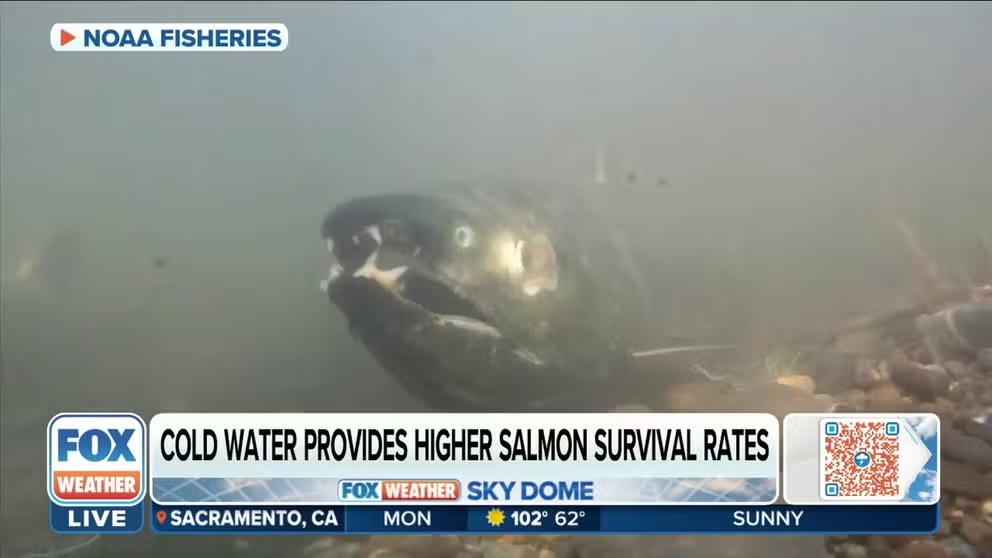How salmon numbers rise and fall during El Nino and La Nina
Salmon in the waters of Alaska and the Pacific Northwest are particularly affected
Salmon numbers rise and fall during El Nino and La Nina
Nate Mantua, Climate Scientist at NOAA Fisheries, explains how salmon numbers rise and fall during El Nino and La Nina.
It’s one of the most iconic shots in nature documentaries: salmon, in slow-motion, leaping above rushing river rapids and dodging the open jowls of hungry bears, all for the sake of reaching their nesting grounds.
Their treacherous journey is a tale as old as time. But outside of a bear’s voracious appetite, another factor can impact the salmon’s journey and the survivability of the fish they spawn: the weather.
HOW TO WATCH FOX WEATHER ON TV
In the United States, salmon are primarily found in the waters of Alaska and the Pacific Northwest. Given the coastal nature of these regions, the weather they experience is largely dictated by the conditions of the Pacific Ocean.
Oceanic temperature changes, in particular, create certain weather conditions that can have a significant effect on the amount and quality of cold water in salmon habitats. This, in turn, affects the health and numbers of salmon.
The role of El Niño and La Niña
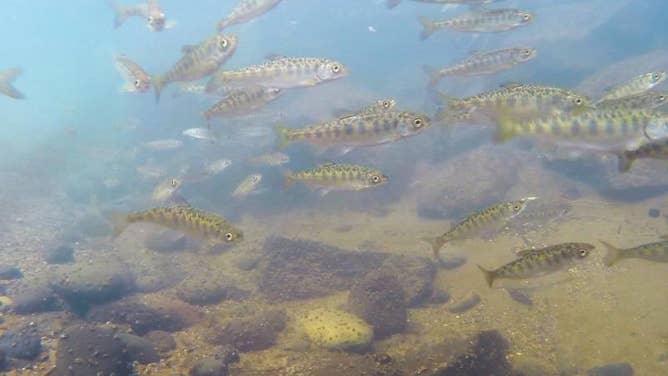
Chinook salmon swimming in murky water.
(NOAA)
Oceanic temperatures and weather changes are driven by extreme weather cycles known as El Nino and La Nina.
El Nino is a cyclical climate pattern that sees the warming of ocean waters around the tropics. In contrast, La Niña is a cyclical climate pattern that sees a cooling of tropical ocean waters.
These cooling and warming events cause ripple effects throughout the Pacific Ocean and around the world.
"This is a phenomenon that's totally natural — it's been happening for hundreds of thousands of years," said Nate Mantua, a research scientist in NOAA's Southwest Fisheries Science Center.
"It's something that scientists got excited about decades ago because it affects so much of the earth's climate and it also affects the oceans and marine life and fisheries in sometimes unpredictable ways."
One of those ways involves the size of salmon populations in Alaska and the Pacific Northwest.
According to Mantua, in Alaska, El Nino typically brings a milder and wetter winter with more snowmelt and rain-fed runoff. This runoff feeds the waterways with plenty of cold water, creating prime habitat for breeding in freshwater and improved ocean conditions for salmon once they go to sea.

Waters rush past a glacier in Alaska.
(VW Pics / Getty Images)
But further south in the Pacific Northwest, Mantua said this same El Nino event brings a warmer and drier winter, along with a warmer ocean.
This means that less snow falls, creating a smaller snowpack in the mountains during winter; and because of the small snowpack during an El Nino winter, when spring arrives, there is less snow for the warmer temperatures to melt. This creates less cold water flowing into the watersheds, which leads to a degradation in the freshwater habitat for salmon.
During a La Nina year, the effects on each location are reversed.
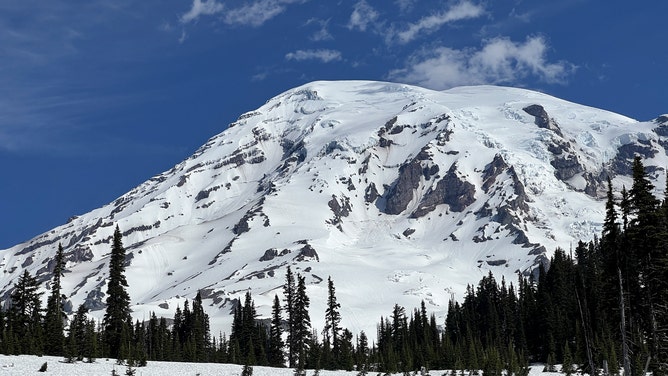
Wisps of clouds hover above a snowy Mt. Rainier in Washington. While El Niño typically creates less now for areas such as this in the Pacific Northwest, La Niña usually brings more snow.
(Thomas O'Neill / NurPhoto / Getty Images)
According to Mantua, the colder ocean currents disfavor Alaska salmon by bringing in a drier winter, while benefiting salmon in the Pacific Northwest by bringing in colder storms and heavier snowpacks to the region’s mountains.
HOW TOO MUCH AND NOT ENOUGH RAINFALL IS HURTING FISH IN THE WEST
"The ocean currents and ocean temperatures tend to change in ways that also make it more productive and more of a cold water subarctic ocean food web, where salmon grow faster and survive at higher rates and come back in bigger numbers," Mantua said.
The importance of cold water for salmon
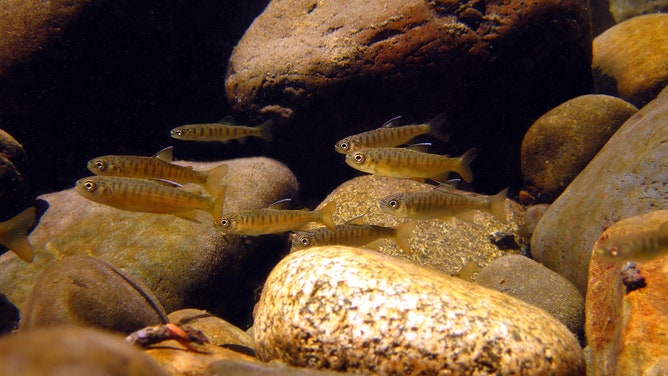
Juvenile Coho salmon swim in a rocky river.
(John R. McMillan / NOAA Fisheries West Coast & NWFSC)
Salmon can only procreate once in their lives, according to Mantua.
While a salmon female can lay around 10,000 eggs, the survival rate of their spawn greatly depends on the environmental conditions they’re born in — from the food they have to the predators they interact with to the quality and amount of water they live in.
"The more cold water at the times they need, it tends to provide higher survival rates in the early part of their life," Mantua said. "In a really productive and cold ocean when they go to sea, tends to favor rapid growth, higher survival rates, and then higher adult returns."
Because of the fish’s dependence on cold water, weather changes brought by El Nino and La Nina can mean feast or famine for salmon.
Fishing during El Niño and La Niña
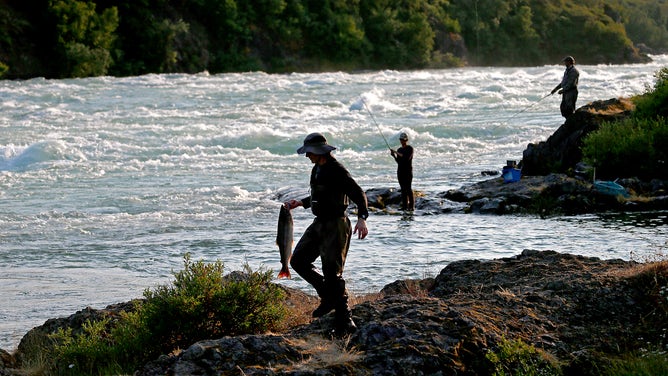
Anglers fish for sockeye salmon along the rapids of the Newwhalen River near Iliamna, Alaska.
(Luis Sinco / Los Angeles Times / Getty Images)
Downstream, these changes also impact the fishermen whose livelihoods depend on the coldwater fish.
Fishing companies may adjust their staffing and equipment needs, based on whether an El Nino or La Nina is forecast. As El Nino and La Nina occur on irregular cycles and are relatively unpredictable outside of a 6- to 12-month forecast, the fisherman have to prepare for limited predictability.
"I think that they tend to be very flexible because every year brings some surprise to them that, even though there is some predictability in how things are going to play out from one year to the next and with our forecasting tools, a lot of times it doesn't translate into really helpful information down to the scale where they work, in the port that they are," Mantua said.
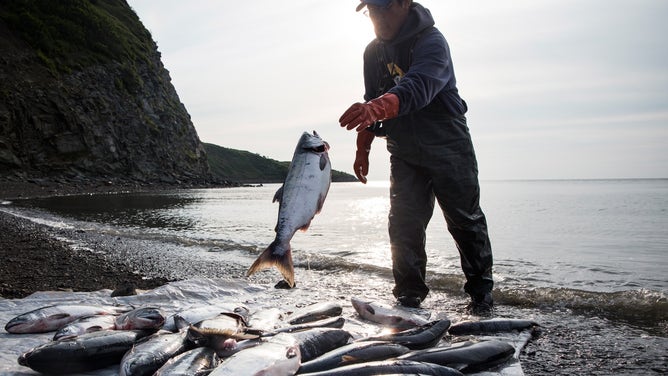
Joseph John Jr. washes freshly caught salmon with his son, Jeremiah John, while waiting for the tide to come in on July 1, 2015 in Newtok, Alaska.
(Andrew Burton / Getty Images)
Independent fishermen, however, may have to adjust on the fly. Mantua spoke of a fisherman who, despite originally being on a salmon trip, changed his plans and switched his equipment when he heard albacore were in the area instead.
LEARN ABOUT A FISHING LEGACY SPANNING MORE THAN 400 YEARS
"He just tries to be flexible and take advantage of opportunities as they present themselves," Mantua said. "I think that that is really how a lot of the successful people in the industry have stayed — it's by being adaptive and able to adjust on the fly when conditions change."
Beyond our plates

John Palega (left) and his son Jalen Palega, 8 years old enjoy sushi, such as salmon roll, in northern California.
(Liz Hafalia / The San Francisco Chronicle / Getty Images)
For the average person whose connection to salmon may only be their dinner plate or a wildlife documentary, Mantua said it’s important to understand the connections between El Niño and La Niña on salmon and other aspects of our lives.
"It's also a big factor in how cold the winter is going to be in North America, and that's going to affect your power bill and how cold they're going to be and what you need to do to heat your house," he said. "It also has a big influence on the storms that you'll see in the winter and spring and where that's going to happen. So, it does give us insights into the near term, like what is likely to be coming."
"I think it's just really interesting to hear about how nature is so interconnected from one place to another and one thing to another and Niño, and it reaches into all different systems around the world," he added.
